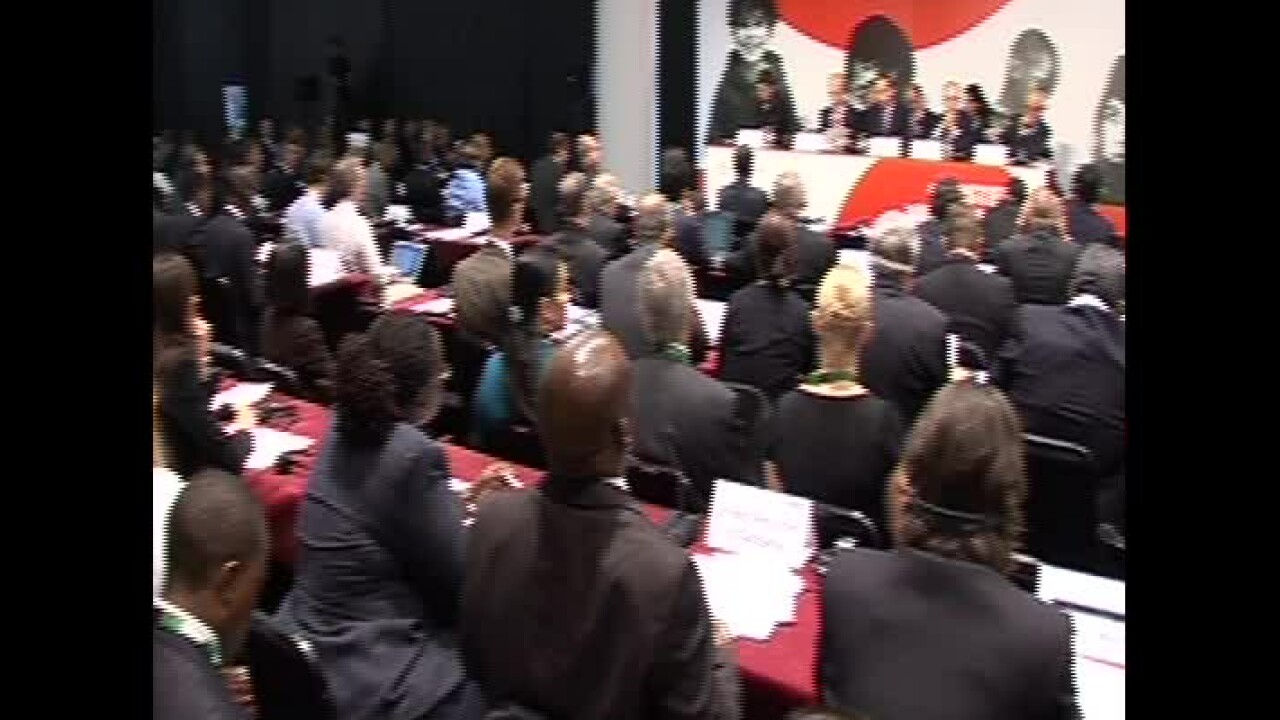Cluster Munition Convention - Oslo signing ceremony

This is a modal window.
Representatives from more than one hundred governments are meeting in Oslo, Norway, 02-04 December 2008, to sign the Convention on Cluster Munitions (CCM) adopted last May in Dublin. The treaty, which bans the use, manufacture and transfer of such weapons, also requires State parties to destroy their stockpiles, clear remnants and assist victims and their communities.
Says Don McKay, Ambassador of New Zealand to the United Nations in Geneva: "What the convention does is it prohibits the manufacture, possession, use, transfer of all cluster munitions."
Because of its comprehensive approach, the ICRC considers this treaty as an historic step forward that will put an end to the long-term suffering caused by cluster munitions among civilian populations. Says Knut Doermann, head of the ICRC legal division: "The adoption of the Cluster Munitions Convention by more than 100 states is recognition ...that the use of cluster munitions causes unacceptable harm to the civilian population."
There is still a lot of work ahead for this Convention to become a reality. States have to sign it, translate it into national legislation and implement it in good faith. As Doermann puts it: "What is required as next steps is the national procedures for ratification and acceptance of this convention to make sure that this convention becomes part of law of countries. In fact the ICRC is strongly urging states to do it as quickly as possible."
More than 100 states are expected to sign the convention in Oslo. But the legislation will also have an impact on states which do not sign. According to Don McKay: "What we also need to do with this convention is to stigmatize cluster munitions for those countries that are outside the convention." The more states who sign, the stronger this stigmatizing effect will be.
The action objectives of the Convention on Cluster Munitions (Article 3: Destruction of stockpiles within 8 years - Article 4: Clearance of remnants within 10 years - Article 5: Assistance to victims and their communities) are said to be realistic though their implementation will take a good deal of commitment according to Colin King, explosive removal expert: "We've heard a lot of strong talk, a lot of support, but in the end it's going to come down to some real commitment and a lot of resources. It's going to be very expensive to destroy stockpiles, it's going to be very expensive to clear large areas."
The swift adoption of the treaty and its future implementation will help send another clear message to the major military powers that are still willing to use cluster munitions. Says Doermann: "It is also clear that if in future conflicts cluster munitions will be used and human suffering will be caused in the same magnitude as we have seen in the past, these States that continue to use cluster munitions will have a political price to pay."
Without urgent international action, the human toll of cluster munitions could become far worse than for anti-personnel landmines. Billions of cluster submunitions have been stockpiled by the world's states. Many models are aged, inaccurate and unreliable. But while landmines were in the hands of virtually all armed forces, only about 75 states currently possess cluster munitions. It is therefore not too late to prevent human suffering on a potentially massive scale.
Cluster munitions are usually bombs, rocket or artillery shells which open to release up to 650 smaller 'bomblets'. These bomblets, known as submunitions, disperse and explode over a wide area. Experience over the last four decades has shown that between 10 and 40% of them fail to detonate. At the time of use, they can have a devastating impact over wide areas.
It took the 2006 war in southern Lebanon to make the world finally sit up and take notice of the dreadful consequences of cluster munitions. In just one month an estimated 37 million square metres of land were contaminated with up to a million unexploded cluster submunitions. More than 250 civilians and clearance operators have been killed and injured by them since the fighting ended.
Unexploded submunitions have turned large tracts of land into deadly no-go areas in some 20 countries and areas of the world - including Afghanistan, Cambodia, Iraq, the Balkans, Lebanon, Tajikistan and Vietnam. The world's worst affected county is Laos.
Facts and figures
• 34 countries are known to have produced over 210 different types of cluster munition. These include projectiles, bombs, rockets, missiles and dispensers.
• At least 75 countries currently stockpile cluster munitions (Human Rights Watch). Current stocks amount to millions of cluster munitions, containing billions of individual submunitions.
• At least four countries that previously produced cluster munitions have enacted new national policies or laws in which they undertake not to produce any more of them (Human Rights Watch).
• At least 21 States are contaminated with unexploded submunitions.
• A 2007 study published by Handicap International confirmed 13,306 deaths and injuries due to cluster munitions.
• In Lebanon (2006), up to 4 million submunitions were delivered in 5 weeks. Hundreds of thousands did not explode on impact.
• During the Kosovo conflict, up to 290,000 submunitions were delivered in 11 weeks. Approximately 30,000 failed to explode. 54% of contaminated areas were agricultural lands.
• From 1964 to 1973, 270 million submunitions were released over Laos for an estimated number of 9 to 27 million unexploded submunitions (data: UXO Lao).
SHOTLIST ATTACHED